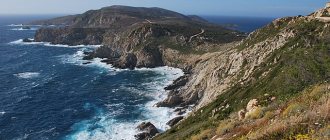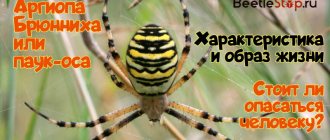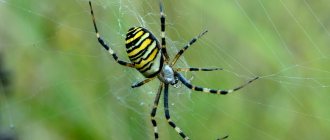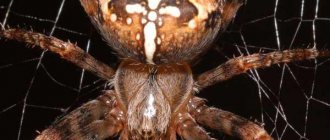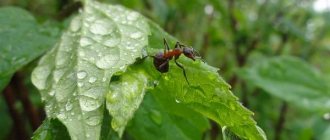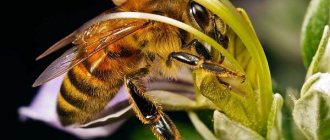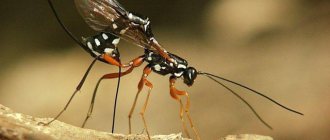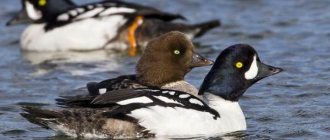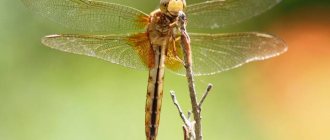Description and features
Some people think of spiders as insects, but they are not. They belong to the class of arachnids or, in other words, arachnids. Such creatures are multifaceted, large in number and ubiquitous.
Sometimes they inspire subconscious horror. And this is despite the fact that most spiders pose absolutely no danger to humans. But such fears are not difficult to understand. It’s just that these creations of nature are too different from us humans.
These fantastic creatures have as many as eight legs. And their body is built from two main parts, fastened together by a thin “waist”. The posterior region is called the abdomen, and the anterior one is both the head and the chest at the same time.
On the front part there are chelicerae - a pair of clawed processes similar to claws, but these are more likely the jaws of eight-legged animals, which can be poisonous. In some of the spiders they are located in parallel.
In others, classified as araneomorphic infraorder, they are directed diagonally towards each other, like two sabers, ready to cross at any moment. And this allows the owners to attack prey that is large in comparison with their size, because these creatures are overwhelmingly predators.
Araneomorphic representatives of the class are given a short life by nature. In addition, they do not have impressive proportions, like, for example, tarantulas or tarantulas. And it is precisely these arachnids that include the jumping spider, , the hero of our story.
It fully corresponds to the description given above, which is common to all spiders; it just needs to be supplemented a little. The cephalothorax of horses, as expected in organisms of this type, is a single whole.
But the head and chest are delimited only by a shallow groove running across. In front, this elongated area is significantly raised, its sides are steep, due to which the back part appears flat.
Horses are endowed with very amazing, keen and vigilant systems of visual perception. They are the owners of eight eyes. And not only are these organs located in different places in three rows around the circumference of the head, but each of them has its own purpose.
The first facial row consists of four round movable formations, the central ones of which are impressively large, and the outermost ones are somewhat smaller, but also very noticeable. These eyes give owners an idea of the colors and shapes of surrounding objects.
In terms of complexity, these optical devices are almost comparable to human ones, although the information they provide is still not as multifaceted as ours. The other two small eyes are located on the sides in the middle of the head, and in its back there is one more, last pair of larger eyes. All this helps spiders look at the world in all directions.
It should be noted that the numerous watchful eyes of these creatures, located in front, on the sides and behind, are no longer created to admire the surrounding beauties. They provide terrain navigation and are designed to determine the location of potential prey and the required distance to reach it.
And this property is very useful for eight-legged predators, whose life is a war for survival and an endless search for new victims, and therefore contains many surprises. Indeed, despite their modest appearance, horses have not only amazing eyes, but also many other impressive abilities that can rightfully be called supernatural.
Of the class of arachnids, these creatures can be considered the smartest, since the ratio of body volume to brain mass is comparable to that of humans. But on the other hand, how can we humans compete with such tiny inhabitants of the planet!
Their world is so complex, multifaceted and full of events. And we don’t notice it only because it is too small and swarms too low under our feet. However, if nature gave us the strength of an ant, we could carry skyscrapers on our backs.
If people had the jumping ability of a grasshopper, they would cross huge rivers in the blink of an eye and ascend to the clouds. As their name suggests, jumping spiders are also champion jumpers. And this is true, and the additional capabilities of vision help them measure the accuracy of their leaps.
Poisonous spiders
KarakurtKarakurt is a spider with a black body and red spots on the abdomen. Individuals of this species are among the most poisonous in the world. Their bite most often entails, but they themselves attack only in cases where they are disturbed. The bite wound is barely noticeable. At the beginning, local symptoms appear: burning pain, redness, “goosebumps”. Then the general condition worsens, severe sweating, chills, headache, nausea, suffocation, and muscle spasms appear. The reaction to the bite usually develops over the first few hours.
TarantulaThe tarantula has a gray-brown body color, so it is difficult to distinguish in natural conditions. The spider is found in the steppes and is only active when it goes hunting. Its bite does not lead to death, as many people believe, and does not have serious consequences. Main symptoms: itching and severe pain. Among the unpleasant symptoms, an allergy may develop, and as a result, shock.
Hermit spider This species is extremely poisonous to humans. The recluse spider is usually brown or dark yellow, and the legs are quite long relative to the body. It lives in Australia and the USA. This species is dangerous because it is practically invisible, and its bite causes symptoms only on the second day. Itching and noticeable swelling appear, in place of which an ulcer gradually develops. The deep layers of the skin are damaged and the temperature rises. In case of severe intoxication of organs, death is possible.
As soon as a spider bite is detected, you must call a doctor. Before his arrival, you can provide first aid to the victim. First fix the limb. A tire is suitable for this. Then the area above the bite needs to be tied with a tourniquet. A lotion of potassium permanganate is applied to the bite itself. It is advisable for the patient to drink fluids.
Poisonous spiders in Russia are not such a rare phenomenon. A meeting with them can end in quite a lot of trouble, including a hospital bed and even death. The latter happens rarely and only in the case of untimely or incorrectly provided assistance.
Here, neither specialists nor ordinary people have any disagreements and there cannot be any. Karakurt is the only one of all the representatives of arthropods living in the vast expanses of our country whose bite can be fatal.
Appearance
Only females reaching a size of 15-20 mm are dangerous to humans. They have two distinctive signs that prevent karakurts from being confused with other representatives of arthropods. There are exactly 13 bright spots or dots on the upper side of the black abdomen. Naturally, there is no time to count them, but the very combination of black with bright spots should serve as a signal of danger. On the underside of the abdomen there is one equally bright spot in the shape of an hourglass.
Habitats
Karakurts are thermophilic. They live in the Southern Urals, the Caucasus and the Black Sea regions. However, recently the habitat of this spider has expanded to more northern regions of Russia, right up to the Moscow region. This is explained by global warming, but more optimistic scientists are confident that this only happens in very hot years, and not always.
Consequences of a bite
Karakurt, which has a very strong poison, unlike other spiders, is very aggressive and bites not only for the purpose of self-defense
He can attack purposefully, so you should not only tease him, but also approach him with great caution. The bite itself is very painful, and after 10-15 minutes the pain spreads throughout the person’s body and becomes almost unbearable. If assistance is not provided in a timely manner, which consists of administering a special serum, shortness of breath, nausea, vomiting, rapid heartbeat, fever, headache and dizziness, tremor, profuse sweating, and a feeling of heaviness in the chest may develop.
If assistance is not provided in a timely manner, which consists of administering a special serum, shortness of breath, nausea, vomiting, rapid heartbeat, fever, headache and dizziness, tremor, profuse sweating, and a feeling of heaviness in the chest may develop.
Kinds
Arachnids are considered one of the oldest among land animals. Among them, the order of spiders is considered the most famous and numerous. And the family of jumping spiders contains about two dozen subfamilies alone.
They are divided into six hundred genera. The species of jumping spiders are also famous for their diversity, and their representatives are many-sided, having a variety of characteristics, parameters and shapes. In total, according to the latest data, there are about 5800 varieties of such creatures.
Let's introduce some of the most famous and common ones.
1. Pied racer (common) - a small creature measuring only about 6 mm. The colors of such animals are really variegated, more precisely black and white. Their whole body is covered with hairs - these are the senses and smell, but especially the hairy paws. As for vision, it is perfectly developed, like all representatives of this family.
The eyes of such horses are large in size, but the two front eyes are even huge and create a stereoscopic image. Some eyes adjust sharpness, others detect movement. These spiders are widespread in the Northern Hemisphere and are often found near human habitation.
2. The golden jumping spider stands out among its relatives with its wonderful colors, shimmering in purple and gold, which makes such creatures reminiscent of precious stones. We could admire such splendor to our hearts’ content if we could take a good look at it all.
But this is a bit difficult, because the size of the beauties is only about 4 mm or a little more. Babies live in Thailand and other Southeast Asian regions. And despite their tiny size, golden spiders are rightfully considered successful and very skilled hunters.
Horses, having a natural talent to regulate blood pressure at will, change the size of their paws, increasing them so much that they are able to jump for prey at distances that are gigantic in comparison with their parameters. The maximum jump of a golden horse can be about half a meter.
3. The Himalayan horse , despite its tiny (less than 5 mm) size, is an extreme creature of its kind, because it has settled down to live in the Himalayan highlands. It lives in places where practically no life forms comparable to it are found.
And therefore he has to feed on tiny unfortunate insects, mainly springtails and flies, accidentally blown onto the mountain slopes by gusts of strong winds. These survival champions have a white and dark color scheme.
Their chitin, that is, a hard, dense shell that covers and protects the body of spiders, most often in such creatures has a dark brown color, and the hairs are white. Brave high-mountain extreme sports enthusiasts have shaggy, sometimes orange-tinged limbs.
4. The green jumping spider is a resident of distant Australia, found in some of its states and islands located in close proximity to the mainland, it is beautiful in its own way and resembles a green, sometimes yellowish candy, with legs extending from it. The males have especially bright colors and are famous for their mating dances.
Such spiders are large in comparison with many of their relatives, but in fact the babies are only a centimeter long. The chelicerae of males, like the front part of the head, have a different shade from other parts of the body, predominantly brown and white, which resembles sideburns.
5. The ant jumper is a tropical resident, often found in Africa and Australia, as well as in the Asian jungle. It is famous for the fact that it received its name; it is extremely similar in appearance to an ant, whose appearance, according to the whim of nature, it is designed to imitate.
The fact is that ants in the tropics are unusually aggressive and biting, and therefore everyone is afraid of them. And such mimicry turns out to be convenient and promotes survival. Such creatures have different colors, from black to sand. By the way, there are varieties of horses that copy false scorpions and some beetles in their external features.
6. The red-backed jumping spider is a tiny representative of the fauna of North America, however, among jumping spiders it is considered one of the largest. In its homeland it can be found in oak forests and coastal dunes. Such spiders prefer dry spaces, where they hide under logs and stones, and are often seen in vineyards.
These creatures are famous for their ability to build tubular silk nests, which can be found on vines and under rocks. The coloring of spiders is mostly dark, and the body is decorated with light hairs, especially thick on the limbs.
But the back of such eight-legged animals, as the name suggests, is really red. It can be monochromatic, or may have only scarlet areas interspersed with dark areas and white dots.
Other poisonous spiders of Russia
Here, neither specialists nor ordinary people have any disagreements and there cannot be any. Karakurt is the only one of all the representatives of arthropods living in the vast expanses of our country whose bite can be fatal.
Appearance
Only females reaching a size of 15-20 mm are dangerous to humans. They have two distinctive signs that prevent karakurts from being confused with other representatives of arthropods. There are exactly 13 bright spots or dots on the upper side of the black abdomen. Naturally, there is no time to count them, but the very combination of black with bright spots should serve as a signal of danger. On the underside of the abdomen there is one equally bright spot in the shape of an hourglass.
Karakurt is the only spider in Russia whose bite can be fatal
Habitats
Karakurts are thermophilic. They live in the Southern Urals, the Caucasus and the Black Sea regions. However, recently the habitat of this spider has expanded to more northern regions of Russia, right up to the Moscow region. This is explained by global warming, but more optimistic scientists are confident that this only happens in very hot years, and not always.
Consequences of a bite
Karakurt, which has a very strong poison, unlike other spiders, is very aggressive and bites not only for the purpose of self-defense
He can attack purposefully, so you should not only tease him, but also approach him with great caution. The bite itself is very painful, and after 10-15 minutes the pain spreads throughout the person’s body and becomes almost unbearable. Even after administration of the serum, symptoms may persist for another day.
Even after administration of the serum, symptoms may persist for another day.
First aid
The only thing that can be done for the victim is to take him to the nearest hospital as soon as possible.
In the vastness of the Russian Federation, you can meet other representatives of arthropods that are capable, if not of killing a person with their bite, then of causing a lot of painful sensations.
- South Russian tarantula. The venom of this fairly large spider, reaching 30 mm in length, is not fatal to humans. However, the bite site swells very quickly and is very painful. An allergic reaction is possible in the form of rashes and redness of the skin, accompanied by itching and burning in places where the scratch is made.
- Heiracanthium. Tops the list of poisonous spiders in central Russia. Unlike the karakurt, it does not specifically attack and can bite only for the purpose of self-defense. The symptoms are quite unpleasant: a strong burning sensation at the site of the bite, nausea, vomiting, headache, fever, body aches, weakness. The bite site itself looks quite scary: it turns red, blue, and may even become covered with blisters. This condition can last up to 3 days. Seeing a doctor is mandatory.
Heiracanthium does not specifically attack people, but can bite in self-defense
- Phalanx (solfuga). One of the few spiders, after a bite it is recommended to suck the wound. It does not have its own toxic poison, but it will certainly cause an infection, causing the wound to become inflamed. It is active only in the dark, but does not bite on purpose, only as a defense.
- Web spider. A rather small spider, it is dangerous, like the previous representative of arthropods, not by poison, but by the possibility of introducing infection into the wound.
Bagworm (bag spider). This spider is aggressive enough to attack even in the absence of direct danger. The bite is not fatal, but is accompanied by very severe pain, which can spread very quickly throughout almost the entire body.
Pouch spider
• False black widow. First of all, it is dangerous because it often gets into living quarters. After the bite, acute, prolonged pain, weakness and fever are felt. Symptoms may last up to two days.
False black widow
- Black fathead. The most peaceful of dangerous spiders. If you don't touch him or pick him up, he prefers to hide. However, if it bites, the wound will hurt for at least a day.
- Argiope. The bite of this striped spider is very dangerous. An allergic reaction to poison can result in deep and severe abscesses, deterioration of general condition and other unpleasant symptoms.
As you can see, poisonous spiders are far from uncommon in Russia, but only the female karakurt should be greatly feared. You can easily cope with the consequences of bites from other arachnids on your own. However, seeing a doctor is highly recommended.
Lifestyle and habitat
The range of the described animals is very wide, and their widespread occurrence has made them quite famous throughout the world. The external diversity of horses depends on their habitat. Most of the species and the most interesting of them are found in the tropics.
But horses have adapted to live in a wide variety of terrestrial conditions and have populated many corners of the planet. They thrive in forests, mountains, even deserts, where they spend their lives on trees, plants, grass, rocks, soil and sand.
Such creatures are also found in temperate latitudes. Being heat-loving, they are often noticed by people at the moment when they crawl out of their hiding places and perch on the walls of buildings and other well-lit, heated places in order to heat their sides in the morning sun before starting to hunt down their prey.
Sometimes the species name can be used to judge the location of such spiders. An example of this is the hawthorn racer . Such creatures often catch the eye of a person, sitting on the tree and shrub flora mentioned in the name.
Although it is not so easy to notice them, because their color allows them to almost completely merge with their given environment. The body of the spiders itself is similar in shade to the trunks and branches, and the orange areas of the legs are in harmony with the fruits of the hawthorn. Such horses live on the Black Sea coast and in other places with a similar climate.
Tiny animals do not need the company of their own kind; they are loners. During the day, spiders are completely busy hunting, and at night they rush to hide in the cracks of rocks, trees, and buildings. This is where these eight-legged creatures tend to hide on days of bad weather, waiting for good weather and warmth.
Their bed is a cradle, independently woven from alkali spider threads. They also survive the winter in reliable shelters, from which they emerge only with the arrival of spring. These tiny spiders are incredibly brave and rarely run away at the sight of a strong opponent.
They attack and attack more often. Watching their dexterity, one cannot help but admire the supernatural abilities of these creatures. They are very mobile, run great, and the claws on their paws help them easily hold on and climb smooth vertical surfaces.
When hunting, they do not spin webs like their other eight-legged counterparts. They use their silk threads as a safety net while making dizzying jumps, the length of which exceeds their own parameters at least twenty times, or even much more.
Behavior in the wild
These representatives of the genus of arthropods lead an active lifestyle, mainly during the day. They use jumping tactics to move in space, hence their name. Before the attack begins, the spider performs a “warm-up”: using a special internal blood pumping mechanism, it prepares its legs for jumping. Immediately before throwing, the jumping spider attaches a safety halyard from its own thread to a wall, platform, or tree branch.
Has the ability to move on smooth surfaces (glass). Other representatives of the arachnid family are deprived of this opportunity by nature. Males use threads to build nests in which their female companions lay eggs and where future small spiders will appear. They feed on insects, some species hunt lizards and frogs.
Nutrition
The horse is nicknamed this way because, after tracking it, it jumps out at its prey and then devours it. At first, with lateral and rear vision, he records even the most insignificant movement around him. And having identified the victim, it determines with unmistakable accuracy the length of the trajectory to it.
And then, having chosen the right moment, he throws a safety thread to the place of his intended landing, jumps with lightning speed, sometimes right in the air he grabs the prey with his front paws, digs in with the chelicerae and injects poison. The injected substance, due to its special properties, dissolves the object of attack, turning it into a liquid substance, which the spider drinks with pleasure.
They feed mainly on insects. And here they are not particularly picky, they eat everything they come across, unless of course the victim is too large. Beetles, other spiders, gaping mosquitoes and flies, as well as other small animals are quite suitable for them.
But there are certain species that are capable of choosing even lizards or frogs as victims. This is not because the representatives of these species are so large, it’s just that nature has awarded the babies with sufficient courage, dexterity, outstanding hunting instinct and super abilities.
What does it eat?
This is a predatory arthropod that feeds on any insects. Preference is given to flies, wasps and ants. It hunts exclusively during the daytime, as it has developed eyesight.
The hydraulic system of movement of the limbs allows the horse to build up the pressure necessary for very long jumps. Before jumping on the victim, it is attached to the surface on which it sits with a web, so that in case of a miss it returns to its original place.
Did you know?
In 1975, Fred Wanless, a British arachnologist, went on an expedition to study arthropods living in the vicinity of the Himalayas. Later, he described his surprise as indescribable when, at an altitude of 6,700 meters, almost at the very top of Everest, he discovered the jumping spiders living there.
Reproduction and lifespan
Male spiders are usually smaller than the eight-legged ladies. This rule also applies to horses. They take an active part in procreation only at the very beginning, and then the female half picks up the baton in species reproduction.
Males occupy and conquer their own territory, from which they drive away their same-sex relatives, but not at all against female society. During the mating season, which lasts in temperate latitudes for the four warmest months of the year, and in hot countries almost all year round, cavalier spiders of all varieties lure their chosen ones with original dances.
The dancers, following a certain rhythm, jump and hit themselves with their front paws more than once. At the same time, they tremble all over their bodies, again waving their legs at a certain frequency.
They look for a mate so diligently that they are often ready to repeat similar dances even at the sight of their own reflection, apparently mistaking it for another spider. Also, while courting the “ladies,” the males try to feed them a delicious dinner. But after mating, their functions end. And caring mothers get down to business.
Females weave nests from silk spider threads, which are placed in quiet, reliable shelters. Having made a clutch, they watch it, but only until the small racers appear. Some species do not make nests, but simply hide their eggs under stones, fallen leaves or in tree bark, limiting the laying areas with spider threads.
Baby racers are born so viable that they are able to feed themselves, and from the first days they already have a passion for hunting. They grow during periodic molts, and after several of them, they reach an adult state. In the photo of the jumping spider you can see what these creatures look like. Their total lifespan is only about a year.
How do spiders weave webs?
All spiders can create webs. In the early days, they used their own yarn as an insurance policy. Then they began to weave carpets in order to recognize the approach of prey by the vibrations of the threads. And finally, we learned how to create clever traps.
The web is produced by the arachnoid glands. They are located in the abdomen (under the liver, near the longitudinal muscles). They emerge as spider warts. Which have hairs called tubules. Their average number is 400-600. The tubes are connected to the glands. Spiders have several types of glands. Each is capable of producing webs with different properties. For example, sticky is never used to weave an egg cocoon.
The spider has complete control over the processes associated with the web yarn. How a spider spins a web:
- His brain analyzes the task.
- Sends a signal to the desired gland.
- It releases a protein mixture.
- It is directed through the channels to the tubes.
- Goes outside.
- The individual presses the warts to the surface, thereby attaching the tip of the future thread.
- It begins to move, pulling out the web from itself.
Sometimes, during the production of webs, he can comb them with his paw. This entangles the fibers to achieve greater strength.
Benefits and harms
In their world they are cruel, dangerous, dexterous and ruthless predators. But nature works in such a way that harm to some species of living organisms inevitably turns into benefit to others.
By hunting insects and, due to their large numbers, exterminating them in large numbers, horses provide an invaluable service for many wild and cultivated types of flora, thus protecting forests and farmland.
By destroying flies, mosquitoes and other blood-sucking parasites, these brave spiders regulate their numbers, and therefore become useful for many warm-blooded animals, including humans themselves.
And thus horses play their important role in the planetary ecosystem. In addition, they themselves become food for small mammals, lizards, wasps and other organisms, restoring the natural balance.
These creatures are permanent and frequent neighbors of humans, and therefore often penetrate into homes, which is not always pleasant for bipeds. But people would do well to think that the benefits of such spiders for the environment far outweigh their harm. It should also be remembered that our ancestors considered the presence of these small creatures in their home as a good omen, promising prosperity and good luck.
Often uncontrollable fears, phobias, arise in people in relation to eight-legged animals under the influence of prejudices and fictitious, not real, danger. Are jumping spiders poisonous or not ?
Without a doubt, they are not capable of causing harm to humans, so there is absolutely no need to be afraid of them. More precisely, such creatures have poison, but are not able to bite through the skin of large mammals, and besides, they are too small for their doses to be at least noticeable to us.
What types of spiders are there?
Arthropods have occupied almost all levels of living space on the planet. They can be found in burrows, on the ground, on bushes, and in trees of any height. The only thing they haven't mastered is air. And that’s conditional. Some species spread on webs that they release in windy weather. A spider on a web flying in the wind is able to cover enormous distances.
Unofficially, spiders can be divided into groups:
- burrows;
- ground;
- under-bush;
- woody
The familiar round web in the shape of a “target” belongs to tree spiders. Burrows use cobwebs to secure the ground so that their home does not collapse. Terrestrials “spread” webs along the ground, weaving pieces of soil into it. They use their web as a signaling system. Sub-bush species live at the base of bushes and weave webs in the form of a hut, which is camouflaged with branches and soil.
Interesting Facts
In the story about these creatures, many interesting facts about them have already been mentioned. And it’s not surprising, because their life is very unusual. But to all of the above, let’s add some more details.
- A well-developed special hydraulic system inside their bodies helps horses regulate blood pressure in their own legs, expanding and enlarging them for grandiose jumps. This complex biological mechanism becomes the main reason for their extraordinary jumping ability.
- The remarkable visual organs of such spiders, although they help them see the world in a color image, due to the structural features of the retina, they do not perceive green shades clearly enough, seeing them somewhat blurry. But this is not a drawback at all, because this property helps eight-legged creatures, ignoring green vegetation, to better focus on the object of the hunt, accurately determining the trajectory of their throw.
- Among the huge number of species of predatory horses, there was a vegetarian, by the way, the only herbivorous representative of the entire diverse spider tribe. This is a spider of the Bagheera Kipling variety. Such creatures live in Central America, live on acacia trees and eat belt bodies from them - growths on the leaves.
It has been noticed that horses watch people especially carefully with their many eyes. It is unlikely that this is associated with a desire to attack or with a feeling of danger. Rather, it is simply curiosity, in this way small creatures study a person, watch us.
People are also interested in them, and therefore representatives of some of the species often become pets. The royal jumping spider is especially suitable for this . Among its baby relatives, it is the largest and reaches sizes of up to 1.5 cm. Such unusual pets are kept in terrariums and often turn out to be very funny and cute.
Notes
- Seifulina R. R., Kartsev V. M.
Spiders of central Russia: Atlas-determinant. - M.: Fiton+, 2011. - P. 112. - 1000 copies. — ISBN 978-5-93457-348-6. - Maddison, Wayne P.
A phylogenetic classification of jumping spiders (Araneae: Salticidae) (English) // Journal of Arachnology: Journal. — American Arachnological Society. - Vol. 43, no. 3. - P. 231-292. — ISSN 0161-8202. - Martin Nyffeler, G.B. Edwards, Kenneth L. Krysko.
A vertebrate-eating jumping spider (Araneae: Salticidae) from Florida, USA (English) // Journal of Arachnology. — 2017-08. - T. 45, issue. 2. - pp. 238–241. — ISSN 1937-2396 0161-8202, 1937-2396. — DOI:10.1636/joa-17-011.1.

